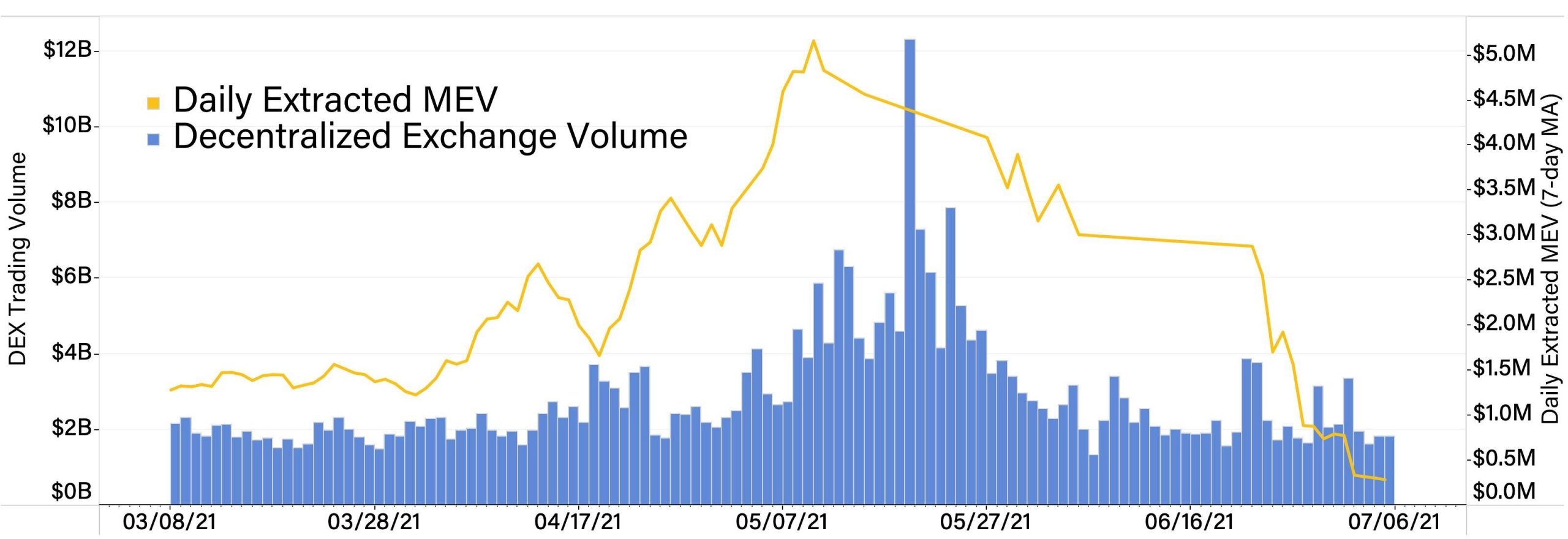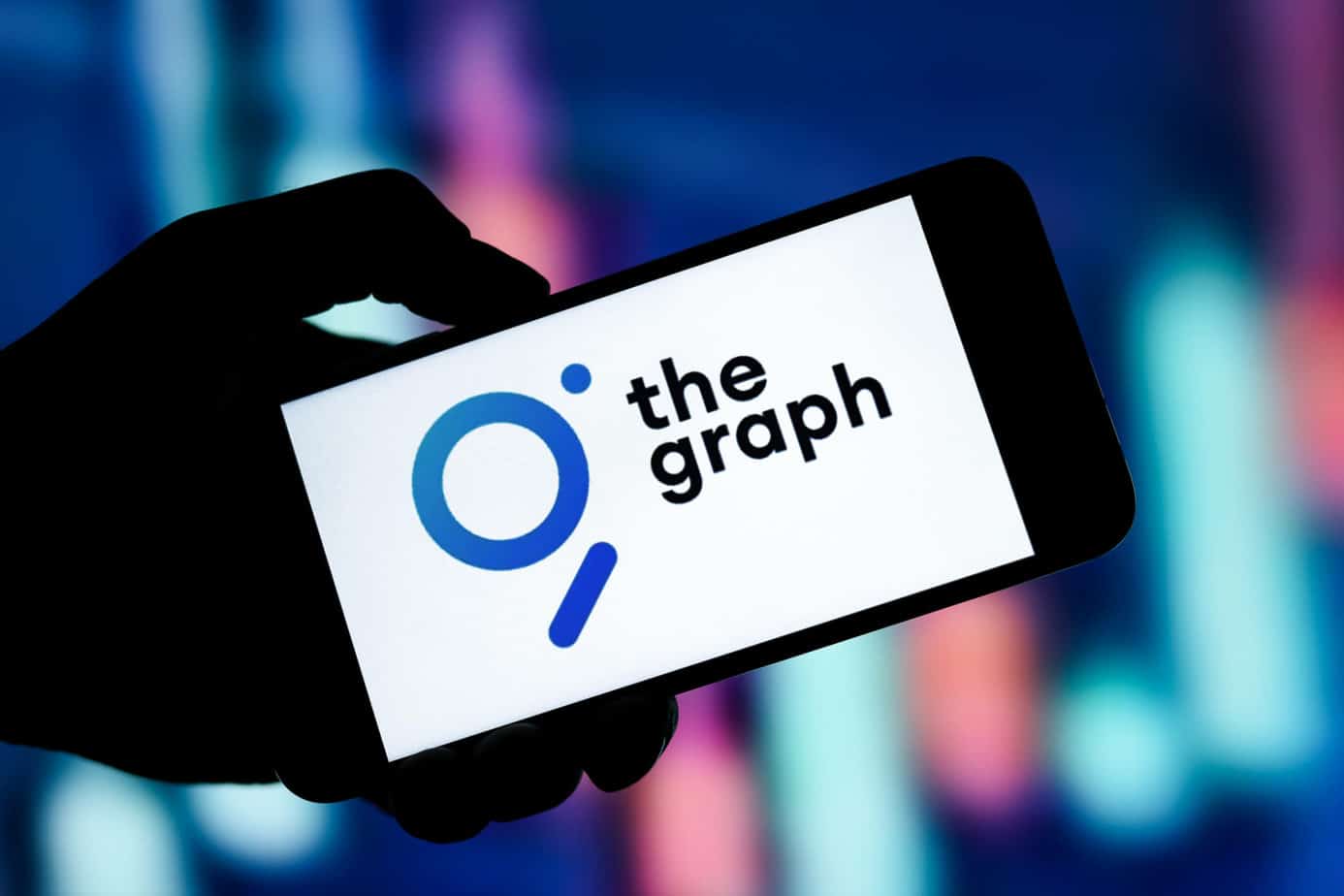Introduction
Cryptocurrency has revolutionized the financial world, bringing disruptive technologies such as decentralized finance (DeFi) and blockchain to the forefront. As the industry continues to evolve, a new concept called Miner Extractable Value (MEV) has emerged, creating waves in the crypto realm. MEV is a term used to describe the profits that miners can make by including, excluding, or reordering transactions within a block.
MEV Crypto represents a significant development in the way transactions are processed and the potential for additional revenue streams for miners. Understanding MEV and its implications can help investors, traders, and enthusiasts navigate this evolving landscape effectively.
In this article, we will dive into the fundamentals of MEV Crypto, exploring its origins, mechanics, and the role it plays in the broader crypto ecosystem. Additionally, we will examine the risks, challenges, and potential future developments in this exciting field.
While traditional cryptocurrencies primarily focus on transaction security and immutability, MEV Crypto brings attention to the economic interests of miners and how they can influence the outcome of transactions. It highlights the power dynamics within the blockchain network and the potential financial incentives that can drive miners to deviate from the original sequence of transactions proposed by users.
Understanding MEV requires awareness of how transactions are processed on the blockchain. When users initiate a transaction, it enters the mempool, a waiting area where transactions await confirmation by miners. Miners, who play a crucial role in securing the network, select transactions from the mempool to include in a block. Their decision-making process is often driven by factors such as transaction fees and the potential for MEV extraction.
MEV extraction involves a range of activities, such as front-running, sandwich attacks, and backrunning. These strategies allow miners to take advantage of price discrepancies, execute trades ahead of other users, and potentially make significant profits. While some argue that MEV extraction is an exploitative practice, others see it as a natural consequence of an open and permissionless blockchain network.
The implications of MEV Crypto reach beyond individual profit-making opportunities. They can impact market fairness, user experience, and the overall integrity of the cryptocurrency ecosystem. As the industry matures, various projects and platforms have emerged to address MEV concerns and develop mitigation strategies. These projects aim to create a more equitable and efficient trading environment for users and eliminate the power imbalances caused by MEV extraction.
As we explore the world of MEV Crypto, it is important to acknowledge the risks and challenges associated with this emerging field. These include potential market manipulation, reduced transparency, and the need for advanced technical knowledge to navigate MEV-related activities effectively.
Understanding MEV Crypto
To grasp the concept of MEV Crypto, it is essential to understand the underlying principles and mechanisms. MEV, which stands for Miner Extractable Value, refers to the potential profits that miners can extract by manipulating the sequence of transactions within a block.
When a user initiates a transaction on a blockchain network, the transaction enters the mempool, where it waits to be confirmed by miners. Miners, who play a vital role in securing the network, select transactions to include in a block and add them to the blockchain. However, they have the freedom to choose which transactions to include, exclude, or even reorder within the block based on their financial incentives.
MEV Crypto brings attention to the economic interests of miners and how that can influence the outcome of transactions. This power dynamic within the network introduces the concept of MEV extraction, where miners strategically manipulate the order of transactions for their financial gain. They can employ tactics such as front-running, sandwich attacks, and backrunning to exploit price discrepancies and make profitable trades.
Front-running is a common MEV extraction technique where a miner executes a trade ahead of other users by placing their own transaction in front of a pending trade. This allows them to take advantage of a price increase or decrease that is likely to happen due to the impending trade. By exploiting this time-sensitive information, miners can profit at the expense of other participants in the transaction.
Sandwich attacks involve miners strategically placing transactions before and after a target trade to manipulate the market. In this scenario, the miner places a transaction in front of the target trade, causing the price to move in a favorable direction. They then quickly execute their own transaction after the target trade to benefit from the price movement. This tactic allows miners to profit from both sides of the market swing.
Backrunning is another MEV extraction strategy that involves miners incorporating transactions that revert certain state changes caused by other transactions. This allows them to exploit opportunities and profit from the time lag between transactions that manipulate the blockchain’s state.
The implications of MEV Crypto are far-reaching. It introduces market fairness concerns, as miners can prioritize their own financial interests over the intended sequence of transactions. In some cases, they may manipulate prices, cause delays, or even exclude specific transactions altogether. These actions can result in an unfair advantage for miners and impact the overall user experience within the crypto ecosystem.
The Origins of MEV
The concept of Miner Extractable Value (MEV) is relatively new in the world of cryptocurrencies. It emerged as a result of the evolving nature of blockchain technology and the economic incentives provided to miners in decentralized networks.
MEV has its roots in the early days of blockchain networks, particularly in the context of Ethereum. Ethereum’s programmable smart contracts opened up a new realm of possibilities for decentralized applications (DApps) and decentralized finance (DeFi). As the popularity of these applications grew, so did the complexity of interactions between different smart contracts and transactions on the Ethereum network.
In this complex ecosystem, miners play a central role in validating transactions, adding them to blocks, and securing the network. They are economically incentivized through transaction fees and block rewards. However, as the value and complexity of transactions increased, miners realized there was room for additional profit beyond traditional block rewards, leading to the emergence of MEV.
MEV originates from the way miners can manipulate the order of transactions within a block. By selectively including or excluding transactions and arranging them in a specific sequence, miners can take advantage of price discrepancies and exploit trading opportunities. This ability to extract additional value through transaction manipulation laid the foundation for the concept of MEV.
The first instances of MEV can be traced back to practices like front-running and arbitrage in the cryptocurrency markets. Front-running involves miners placing their own transactions ahead of pending trades to gain an advantageous position. This practice, albeit controversial, was initially driven by economic incentives and the lack of regulatory oversight in the early days of cryptocurrency trading platforms.
Over time, MEV extraction evolved as more complex strategies were developed. Techniques such as sandwich attacks and backrunning further expanded the possibilities for miners to profit from their ability to manipulate transaction order. These tactics allowed miners to exploit time-sensitive information and market inefficiencies, often at the expense of other market participants.
The emergence of MEV led to extensive discussions within the blockchain community about the ethical implications of transaction manipulation by miners. The debate centered around whether MEV extraction should be seen as an inherent feature of an open and permissionless blockchain network or as a practice that needed to be addressed and mitigated for the ecosystem’s overall stability and fairness.
In response to the challenges posed by MEV, various projects and platforms have emerged to tackle the issue. These projects aim to develop mechanisms to reduce the impact of MEV extraction, increase transparency, and create a more equitable trading environment for participants in decentralized networks.
How MEV Works
To understand the mechanics of Miner Extractable Value (MEV) and how it operates within the crypto ecosystem, it is important to explore the process of transaction selection and block creation by miners.
MEV is the potential profit that miners can extract by manipulating the order of transactions within a block. When a user initiates a transaction on a blockchain network, it is broadcasted to the network and enters a waiting area called the mempool. The mempool acts as a temporary storage space for pending transactions that are awaiting confirmation by miners.
When miners start constructing a new block, they choose which transactions from the mempool to include. This decision is influenced by various factors, including transaction fees, gas prices, and the potential MEV associated with each transaction. Miners are economically incentivized to maximize their revenue, and MEV presents an additional opportunity for them to extract value from the system.
Miners can selectively include or exclude transactions based on their financial interests. This means they can prioritize transactions that offer higher transaction fees or MEV potential. By manipulating the sequence of transactions within a block, miners can exploit time-sensitive information and market inefficiencies to make profitable trades or take advantage of arbitrage opportunities.
MEV extraction relies on several strategies and techniques. Front-running is a common practice where a miner places their own transaction before a pending trade, allowing them to benefit from price movements that may occur due to the upcoming trade. This enables the miner to profit at the expense of other participants in the transaction.
Sandwich attacks involve miners placing transactions both before and after a target trade to manipulate the market. By strategically executing transactions around a specific trade, the miner can profit from price movements caused by their actions.
Backrunning is another MEV extraction strategy where miners incorporate transactions that revert certain state changes caused by other transactions. This allows them to exploit opportunities and profit from the time lag between transactions that manipulate the blockchain’s state.
While MEV extraction introduces the potential for miners to earn additional revenue, it also raises concerns about the fairness and integrity of the blockchain ecosystem. The ability of miners to manipulate the order of transactions can impact market dynamics and user experience. It can lead to market manipulation, create an uneven playing field for participants, and introduce inefficiencies in the transaction process.
As the crypto community recognizes the challenges posed by MEV, efforts are being made to develop solutions and frameworks to mitigate its impact. Several projects and platforms are working on enhancing transparency, improving transaction ordering mechanisms, and reducing the opportunity for MEV extraction. These initiatives aim to create a more equitable and efficient trading environment for users while preserving the decentralized nature of blockchain networks.
The Implications of MEV
Miner Extractable Value (MEV) has profound implications for the cryptocurrency ecosystem, affecting various aspects of market fairness, user experience, and network security. Understanding these implications is crucial to navigate the evolving landscape of MEV and its impact on decentralized finance (DeFi) and blockchain technologies.
One of the primary concerns with MEV is its potential to introduce market manipulation. Miners have the power to prioritize their own financial interests over the intended sequence of transactions, leading to price manipulation, unfair trading advantages, and distortions in market dynamics. This can adversely affect both individual users and the overall health of decentralized markets.
Moreover, MEV can also compromise the user experience within the crypto ecosystem. When miners engage in MEV extraction, they may cause delays in transaction processing or exclude certain transactions altogether. This can result in higher transaction costs, inefficiencies, and frustration for users. It creates an environment where participants’ intentions and expectations can be disrupted by the actions of miners seeking to extract maximum value.
MEV extraction also raises concerns about the integrity and security of the blockchain network. By manipulating transaction order, miners can potentially undermine the decentralization and immutability that are fundamental to blockchain technology. This highlights the importance of ensuring fair and transparent transaction processing protocols to maintain the trust and reliability that underpin the crypto ecosystem.
Additionally, MEV can impact the stability of DeFi platforms. DeFi relies heavily on smart contracts, and the exploitation of MEV can compromise the functionality and reliability of these contracts. It can lead to unintended consequences, such as cascading liquidations, price manipulations, or other vulnerabilities that can harm the overall stability of the DeFi ecosystem.
Addressing the implications of MEV is a complex challenge that requires collaboration among various stakeholders. Efforts are being made to develop technical solutions, improve transparency, and enhance mechanisms to reduce the impact of MEV extraction. Some projects have proposed solutions like MEV-aware transaction ordering processes, where transaction sequencing considers the potential for MEV extraction, aiming to minimize its negative effects.
Regulatory bodies and industry organizations are also exploring ways to address the ethical concerns surrounding MEV. Establishing guidelines, promoting transparency, and encouraging responsible practices can help create a more sustainable and fair ecosystem.
As MEV continues to evolve, it is important for users, developers, and regulators to stay informed and adapt to the changing landscape. By understanding the implications of MEV and actively participating in ongoing discussions and developments, the crypto community can work towards mitigating risks, fostering innovation, and promoting a more equitable and trustworthy cryptocurrency ecosystem for all participants.
MEV Mining and Arbitrage
Miner Extractable Value (MEV) not only presents opportunities for miners to extract additional profits but also impacts the field of arbitrage in the cryptocurrency market. MEV mining and arbitrage are intertwined concepts that play a significant role in the way transactions are executed and profits are made within the crypto ecosystem.
MEV mining refers to the practice of actively seeking and exploiting MEV opportunities to maximize profits. Miners leverage their position in the transaction validation process to selectively include, exclude, or reorder transactions within a block to their financial advantage. By strategically manipulating transaction order and executing MEV extraction techniques like front-running or sandwich attacks, miners aim to capture value from market inefficiencies.
MEV mining allows miners to enhance their revenue streams beyond traditional block rewards and transaction fees. It incentivizes them to actively engage in extracting value from the transaction process, potentially disrupting established market dynamics.
Arbitrage, on the other hand, is a trading strategy that takes advantage of price discrepancies between different markets or exchanges. It involves buying an asset at a lower price in one market and selling it at a higher price in another, profiting from the price difference. Arbitrage traders seek to exploit inefficiencies in the market and quickly execute trades to capitalize on the price discrepancy before it corrects itself.
MEV has a significant impact on arbitrage strategies, especially in decentralized exchanges (DEXs). MEV mining techniques, such as front-running, allow miners to manipulate the order of trades and exploit price movements before other traders have the opportunity to execute their transactions. This can potentially disrupt arbitrage opportunities and make it challenging for traders to exploit price discrepancies effectively.
However, MEV also creates new arbitrage opportunities. As MEV becomes more prevalent, traders can analyze transaction ordering within blocks to uncover potential profit-making opportunities. By identifying and predicting MEV strategies employed by miners, skilled traders can utilize this information to devise arbitrage strategies that take advantage of price deviations caused by MEV extraction techniques.
It is important to note that MEV mining and arbitrage activities are intertwined and can have both positive and negative impacts on the cryptocurrency market. While MEV mining by miners can introduce market inefficiencies, reduce transparency, and disrupt fair trading, it also creates potential opportunities for skilled arbitrage traders to capitalize on price discrepancies and MEV patterns.
As the crypto ecosystem continues to evolve, projects and platforms are emerging to mitigate the negative effects of MEV extraction. MEV-aware transaction ordering protocols and MEV-specific tools aim to enhance transparency and fairness, ultimately minimizing the impact of MEV mining on arbitrage strategies and promoting a more equitable trading environment.
MEV Projects and Platforms
The rise of Miner Extractable Value (MEV) in the cryptocurrency ecosystem has prompted the development of various projects and platforms aimed at addressing the challenges and implications of MEV extraction. These initiatives focus on enhancing transparency, improving transaction ordering mechanisms, and creating a fairer and more efficient trading environment for participants in decentralized networks.
One notable project in the MEV space is Flashbots. Flashbots provides an open platform that allows miners, developers, and researchers to collaborate on MEV-related research and solutions. It aims to create a more transparent and accountable ecosystem by providing tools and resources for understanding and visualizing MEV extraction. Flashbots also explores ways to develop MEV-resistant protocols and efficient transaction ordering mechanisms to mitigate the negative impact of MEV on decentralized finance (DeFi) platforms.
Another significant player in the MEV space is ArcherDAO. ArcherDAO is a decentralized autonomous organization (DAO) that focuses on MEV mitigation and enabling fairer transaction execution. It offers a gas management tool that allows users to specify their preferences for transaction execution and avoid being front-run or outcompeted by MEV-mining activities. This helps protect traders and investors from MEV-related price manipulation and enhances their trading experience on Ethereum and other blockchain networks.
Additionally, Gelato Network is a protocol that aims to automate the execution of MEV-mining strategies in a more decentralized and secure manner. By creating a robust framework for developers, Gelato Network enables the automation of MEV-mining activities while ensuring that transaction ordering remains efficient and fair. This project provides an infrastructure to leverage MEV as a service, mitigating the risks associated with manual intervention by miners and reducing the potential for MEV-related market manipulation.
Furthermore, Keep3r Network is an Ethereum-based protocol that focuses on providing external jobs to smart contracts. It offers a decentralized marketplace for MEV extraction services, allowing developers to access and utilize the expertise of miners to execute transactions securely and efficiently. Keep3r Network aims to minimize the impact of MEV on gas fees, reduce congestion, and ensure transparent and fair transaction execution.
These projects represent a growing ecosystem of MEV-focused initiatives that are actively working to combat the challenges posed by MEV extraction. By providing tools, platforms, and decentralized governance, they aim to create more equitable and efficient markets, reduce the potential for market manipulation, and enhance user experience in decentralized networks.
However, it is worth noting that the MEV landscape is still evolving, and new projects and platforms continuously emerge to tackle the complexities and risks associated with MEV extraction. By fostering collaboration, innovation, and transparency, these initiatives contribute to the ongoing development of a more robust and fairer crypto ecosystem.
Risks and Challenges in MEV Crypto
While Miner Extractable Value (MEV) introduces new opportunities for miners and traders, it also comes with inherent risks and challenges that need to be addressed within the crypto ecosystem. Understanding these risks is essential for users, developers, and regulators to navigate the complexities of MEV effectively.
One of the main risks is market manipulation. MEV extraction allows miners to prioritize their own financial interests over the intended sequence of transactions, potentially leading to price manipulation, unfair advantages, and distortions in market dynamics. This can erode trust and confidence in the cryptocurrency market, affecting the overall stability and integrity of the ecosystem.
MEV also poses challenges to the user experience. As miners engage in MEV extraction, they may cause delays in transaction processing or exclude certain transactions altogether. This can result in higher transaction costs, compromised liquidity, and frustrations for users. It becomes essential to strike a balance between the profit-making opportunities of miners and ensuring a smooth and efficient user experience within the decentralized finance (DeFi) landscape.
In addition, the technical complexity of MEV-related strategies presents challenges for users. Participating in MEV extraction activities requires a deep understanding of transaction sequencing, smart contract intricacies, and the risks associated with various MEV extraction techniques. Inadequate knowledge and technical skills can expose users to financial losses, security vulnerabilities, or unintentional participation in undesirable practices.
MEV also raises ethical concerns surrounding fairness and transparency in the crypto ecosystem. The potential for market manipulation and the advantage of information asymmetry can undermine the principles of decentralization and equality that underpin cryptocurrencies. Regulators are grappling with the need to strike a balance between promoting innovation and protecting users against potential abuses stemming from MEV extraction.
Furthermore, MEV introduces challenges for governance and consensus mechanisms. Transaction ordering and block confirmation processes need to be designed in a way that mitigates the negative impact of MEV while maintaining decentralization and consensus within the network. Striking this balance presents a significant challenge that requires careful consideration and collaboration among stakeholders.
Addressing these risks and challenges requires collective efforts from the crypto community, developers, regulators, and technology innovators. Initiatives are underway to develop MEV-resistant protocols, enhance transparency, and design more efficient transaction ordering mechanisms. Educating users about the risks and providing them with the tools and knowledge to navigate MEV-related activities is crucial to ensure a more secure and trustworthy environment.
Overall, managing and mitigating the risks associated with MEV extraction is an ongoing process that requires continuous research, innovation, and collaboration. By fostering awareness, implementing effective technical solutions, and promoting responsible practices, the crypto ecosystem can navigate the complexities of MEV and build a more resilient and fairer financial landscape for all participants involved.
Future of MEV Crypto
The concept of Miner Extractable Value (MEV) has already made a significant impact on the cryptocurrency ecosystem. As the industry continues to evolve, the future of MEV holds both opportunities and challenges that will shape the trajectory of decentralized finance (DeFi) and blockchain technologies.
One potential future trend is the increased adoption of MEV-aware protocols and transaction ordering mechanisms. Projects like Flashbots, ArcherDAO, and Gelato Network are pioneering efforts to mitigate the negative effects of MEV extraction. These initiatives aim to develop transparent, fair, and efficient protocols that minimize the risks associated with MEV, promoting a more equitable and secure trading environment.
Additionally, advancements in technology and research may lead to the development of more sophisticated MEV mitigation strategies. Collaborative efforts among developers, researchers, and industry participants will be crucial to create innovative solutions that address MEV risks effectively. This may involve the implementation of advanced algorithms, automated strategies, and decentralized governance mechanisms to counteract the negative impact of MEV.
Furthermore, regulatory measures may come into play to address the ethical concerns and risks associated with MEV. Regulatory frameworks that aim to protect users, promote transparency, and foster fair market practices could be introduced to ensure a sustainable and responsible use of MEV extraction techniques. Striking the right balance between innovation and safeguarding the interests of market participants will be a key consideration for regulators.
In terms of user experience, enhancing education and user-friendly tools will be vital to empower individuals to navigate MEV-related activities effectively. As users become more knowledgeable about the risks and opportunities associated with MEV, they can make informed decisions and actively participate in the evolving crypto landscape. User-centric platforms and interfaces that simplify MEV-related processes and provide transparent information will play an essential role in shaping the future of MEV.
The future of MEV may also bring about the emergence of new business models and opportunities. MEV-mining as a service could become more prevalent, where miners provide their expertise and infrastructure to execute MEV-related strategies on behalf of users. As the field evolves, innovative ways to distribute MEV-generated profits and incentivize fair participation among miners and other network participants may also arise.
Ultimately, the future of MEV will be influenced by ongoing research, technological advancements, market dynamics, and regulatory frameworks. It is an evolving landscape that requires constant adaptation and collaboration among all stakeholders involved. By continuously exploring MEV mitigation strategies, promoting responsible practices, and fostering innovation, the crypto ecosystem can strive towards a more transparent, efficient, and inclusive future for MEV and its impact on DeFi and blockchain technologies.
Conclusion
Miner Extractable Value (MEV) has emerged as a significant concept within the cryptocurrency ecosystem, introducing new dynamics and complexities to decentralized finance (DeFi) and blockchain technologies. MEV brings attention to the economic interests of miners and their ability to manipulate the order of transactions within a block to extract additional profits.
In this article, we explored the fundamentals of MEV Crypto, including its origins, mechanics, and implications. We discussed how MEV mining and arbitrage are intertwined, highlighting the opportunities and challenges they present. Additionally, we examined the risks and concerns associated with MEV, such as market manipulation, user experience, technical complexity, and ethical considerations.
Despite the risks and challenges, the crypto industry is actively addressing the implications of MEV. Projects and platforms like Flashbots, ArcherDAO, Gelato Network, and Keep3r Network are developing solutions to enhance transparency, improve transaction ordering mechanisms, and create fairer trading environments. These initiatives aim to minimize the negative impact of MEV extraction and foster a more equitable and secure ecosystem.
Looking ahead, the future of MEV Crypto will be shaped by advancements in technology, regulatory measures, user education, and ongoing research. MEV-aware protocols, innovative strategies, and user-centric tools will play a vital role in navigating the complexities of MEV and optimizing user experiences. Regulatory frameworks may also emerge to safeguard market integrity while fostering innovation within the MEV landscape.
Ultimately, managing MEV effectively requires collaboration among developers, researchers, regulators, and users. By promoting transparency, responsible practices, and the equitable distribution of profits, the crypto ecosystem can strive towards a more secure, fair, and sustainable future for MEV and its impact on decentralized finance and blockchain technologies.
As MEV continues to evolve, it is essential for all stakeholders to stay informed, adapt to changing dynamics, and contribute to ongoing discussions and developments. By working together, the crypto community can navigate the challenges posed by MEV and build a resilient and inclusive ecosystem that promotes innovation, transparency, and trust among its participants.

























